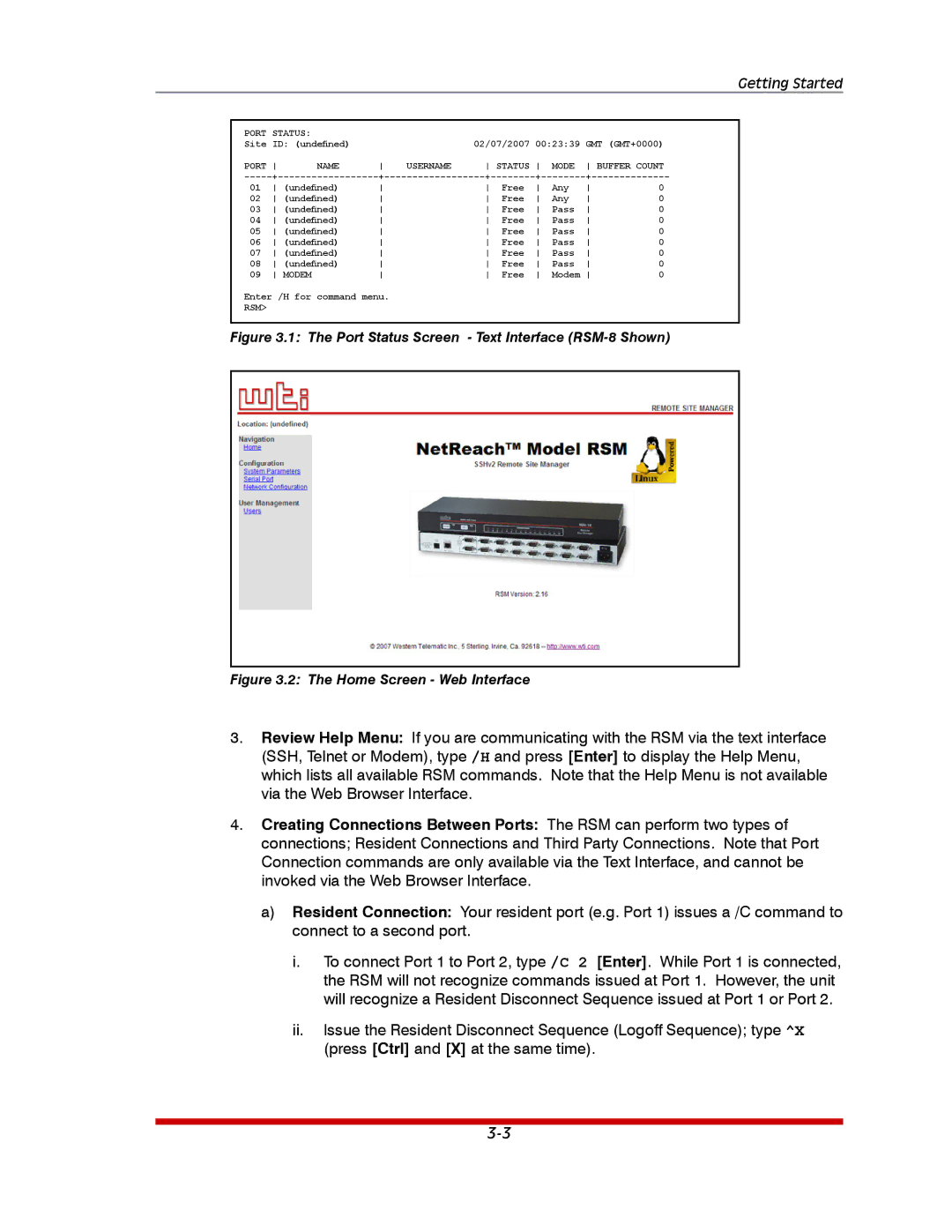
Getting Started
PORT | STATUS: |
|
|
| 02/07/2007 00:23:39 GMT (GMT+0000) | |||||
Site | ID: (undefined) |
|
| |||||||
PORT | NAME | USERNAME | STATUS | MODE | BUFFER COUNT | |||||
Free | Any | 0 | ||||||||
01 | (undefined) |
| ||||||||
02 | (undefined) |
| Free | Any | 0 | |||||
03 | (undefined) |
| Free | Pass | 0 | |||||
04 | (undefined) |
| Free | Pass | 0 | |||||
05 | (undefined) |
| Free | Pass | 0 | |||||
06 | (undefined) |
| Free | Pass | 0 | |||||
07 | (undefined) |
| Free | Pass | 0 | |||||
08 | (undefined) |
| Free | Pass | 0 | |||||
09 | MODEM |
|
| Free | Modem | 0 | ||||
Enter /H for command menu.
RSM>
Figure 3.1: The Port Status Screen - Text Interface (RSM-8 Shown)
Figure 3.2: The Home Screen - Web Interface
3.Review Help Menu: If you are communicating with the RSM via the text interface (SSH, Telnet or Modem), type /H and press [Enter] to display the Help Menu, which lists all available RSM commands. Note that the Help Menu is not available via the Web Browser Interface.
4.Creating Connections Between Ports: The RSM can perform two types of connections; Resident Connections and Third Party Connections. Note that Port Connection commands are only available via the Text Interface, and cannot be invoked via the Web Browser Interface.
a)Resident Connection: Your resident port (e.g. Port 1) issues a /C command to connect to a second port.
i.To connect Port 1 to Port 2, type /C 2 [Enter]. While Port 1 is connected, the RSM will not recognize commands issued at Port 1. However, the unit will recognize a Resident Disconnect Sequence issued at Port 1 or Port 2.
ii.Issue the Resident Disconnect Sequence (Logoff Sequence); type ^X (press [Ctrl] and [X] at the same time).
